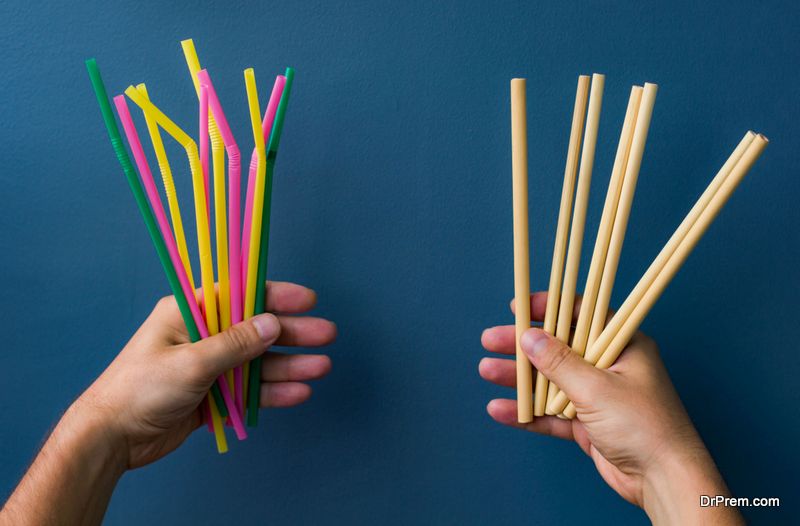Dek: Reusable and biodegradable straws are a noble effort to curb single-use plastic waste — but if we want to save the planet, we can’t stop there.
In the fight for environmental justice, straws have become the latest bad guy.
The number of straws Americans waste each day is striking and frankly uncountable: Outside cites 390 million; Slate reports closer to 329 million. Others claim the figure is 500 million, based on an unverified statistic from a 9-year-old that was, nevertheless, widely picked up.
No matter the exact number, the estimates make it clear: We waste too much. Way, way, way too much. But in the admirable rush to rid the world of disposable straws, we risk missing the bigger picture of your carbon footprint: Straws are a tiny piece of a massive puzzle.
Seeing Beyond Straws
Each year, nearly 8 million metric tons of plastic flow into the ocean. Disposable straws comprise a ridiculously small 0.025% of that waste.
Although plastic straws are indeed wasteful — they’re difficult to recycle due to their size and weight — they should be the start, rather than the stopping point of the conversation. Everyday consumers can make a far bigger impact by focusing on three broad areas of waste:
1. Plastic packaging
 Straws are the proverbial tip of the plastic iceberg. When was the last time you bought a palm-sized product from Amazon only to find it wrapped in packaging three times its size? Have you ever bought those adorable miniature soft drinks that contain as much plastic as they do soda?
Straws are the proverbial tip of the plastic iceberg. When was the last time you bought a palm-sized product from Amazon only to find it wrapped in packaging three times its size? Have you ever bought those adorable miniature soft drinks that contain as much plastic as they do soda?
States such as New York have finally understood the extent of the threat and are decreasing or outright banning single-use plastic bags from retail stores. Companies like Pela are using alternatives to plastic to make their phone cases. But for organization-level efforts to matter, consumers must change their ways as well.
Support groups trying to reduce plastic waste with your wallet. Bring reusable bags to the grocery store. Refill glass containers with food and liquids. And of course, recycle any plastics you do purchase.
2. Air travel
 Americans live in a culture that loves to travel, both for pleasure and business. In 2018, American travelers took 463.6 million domestic business trips, which is projected to rise to 493.7 million by 2022.
Americans live in a culture that loves to travel, both for pleasure and business. In 2018, American travelers took 463.6 million domestic business trips, which is projected to rise to 493.7 million by 2022.
A single round-trip flight from New York City to San Francisco generates about 2-3 tons of carbon dioxide per person. Across an entire year, the average American generates about 19 tons of carbon dioxide. That one flight represents more than 10% of a Western consumer’s annual carbon dioxide emissions.
The simplest solution, of course, is simply to fly less. If you need to travel a drivable distance, take a car or, better yet, public transportation like a bus or train. If you must fly, pick a nonstop flight: Landing and taking off generate about 25% of airplane emissions.
3. Electronics
 Electronic waste does include plastic. But the toxic metals and chemicals used to produce our digital devices are an even larger problem. Like plastics, many of them do not degrade for millennia. But in addition to the degradation issue, e-waste also leech toxins that can harm people, plants, and animals.
Electronic waste does include plastic. But the toxic metals and chemicals used to produce our digital devices are an even larger problem. Like plastics, many of them do not degrade for millennia. But in addition to the degradation issue, e-waste also leech toxins that can harm people, plants, and animals.
Only about 29% of e-waste is recycled, and toxins from e-waste often sicken people from developing nations, who try to make money by scavenging precious metals. Consumers can make simple choices to reduce toxic contamination, including repairing electronics when possible, selling old devices, and buying from sustainable tech companies.
Although you can and should vote with your wallet, push for top-down change as well. Back leaders at the state, local, and national levels with a history of eco-friendly support and legislation. Only the two approaches together — changes to consumer behavior and to the legislative landscape — have a chance of curbing the looming disaster created by unchecked consumption.
Article Submitted By Community Writer


